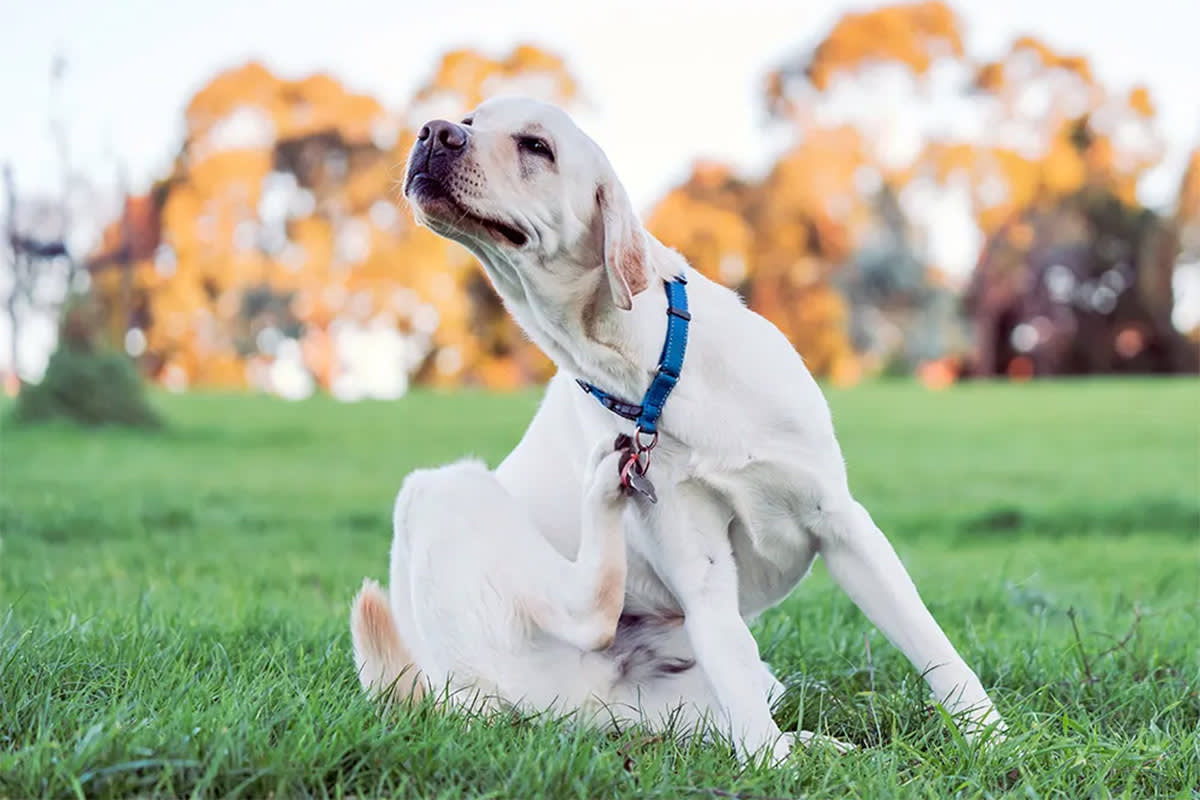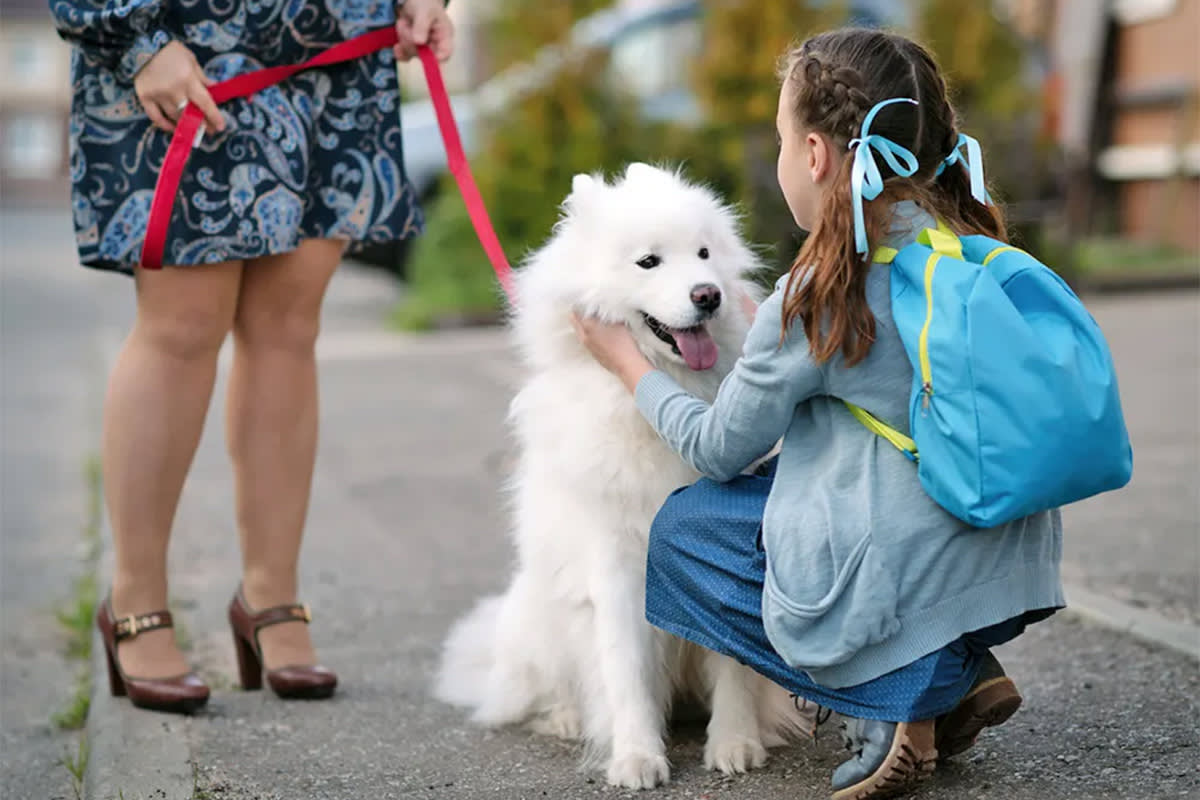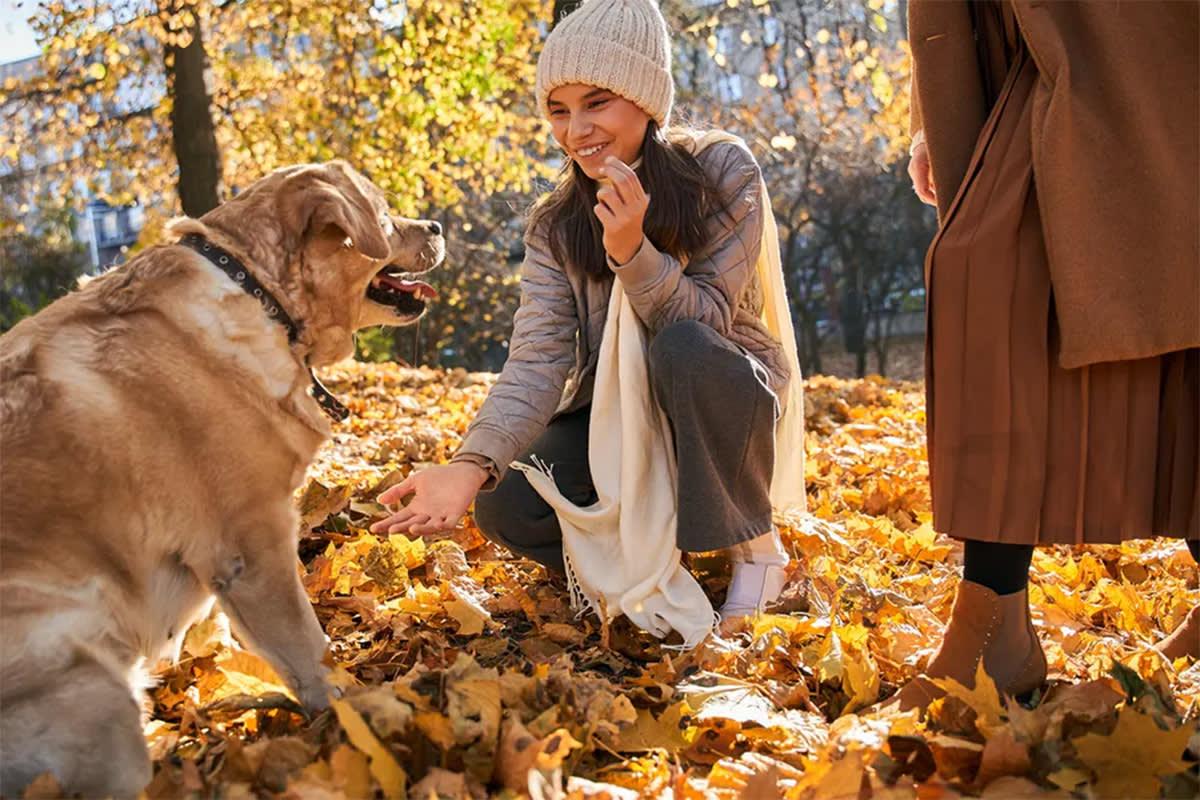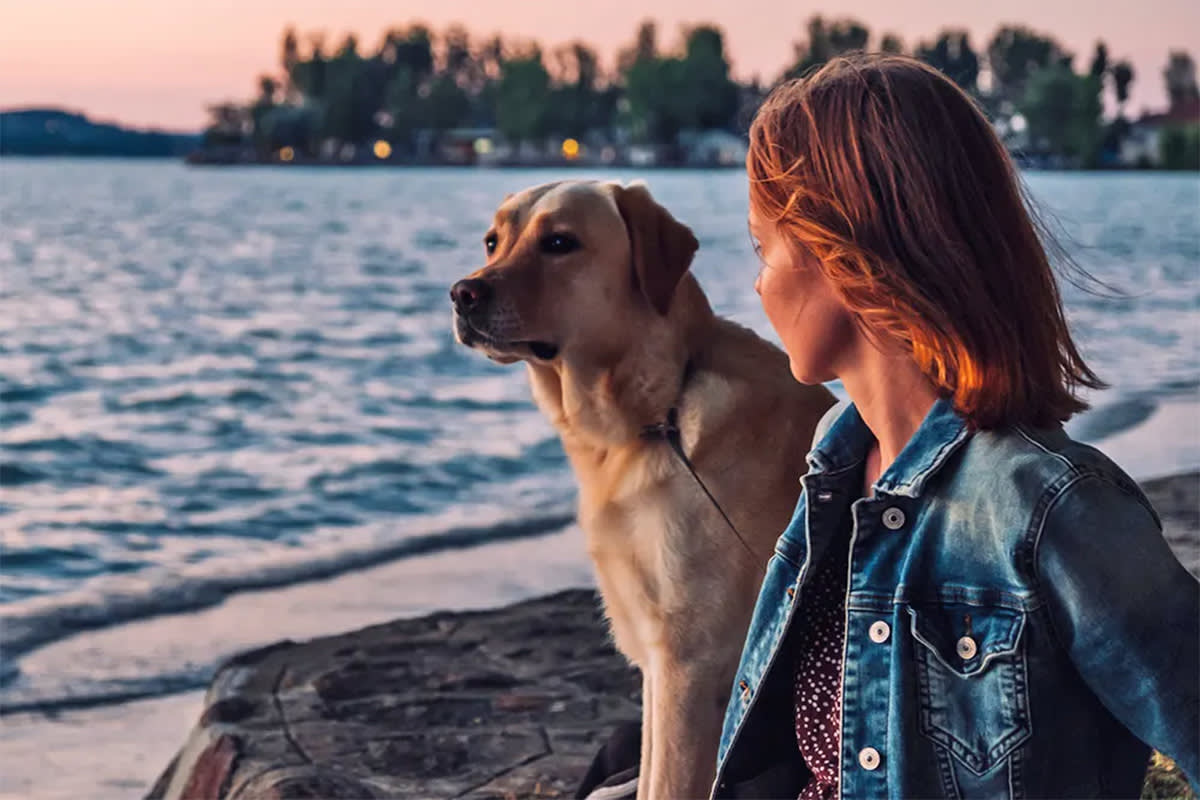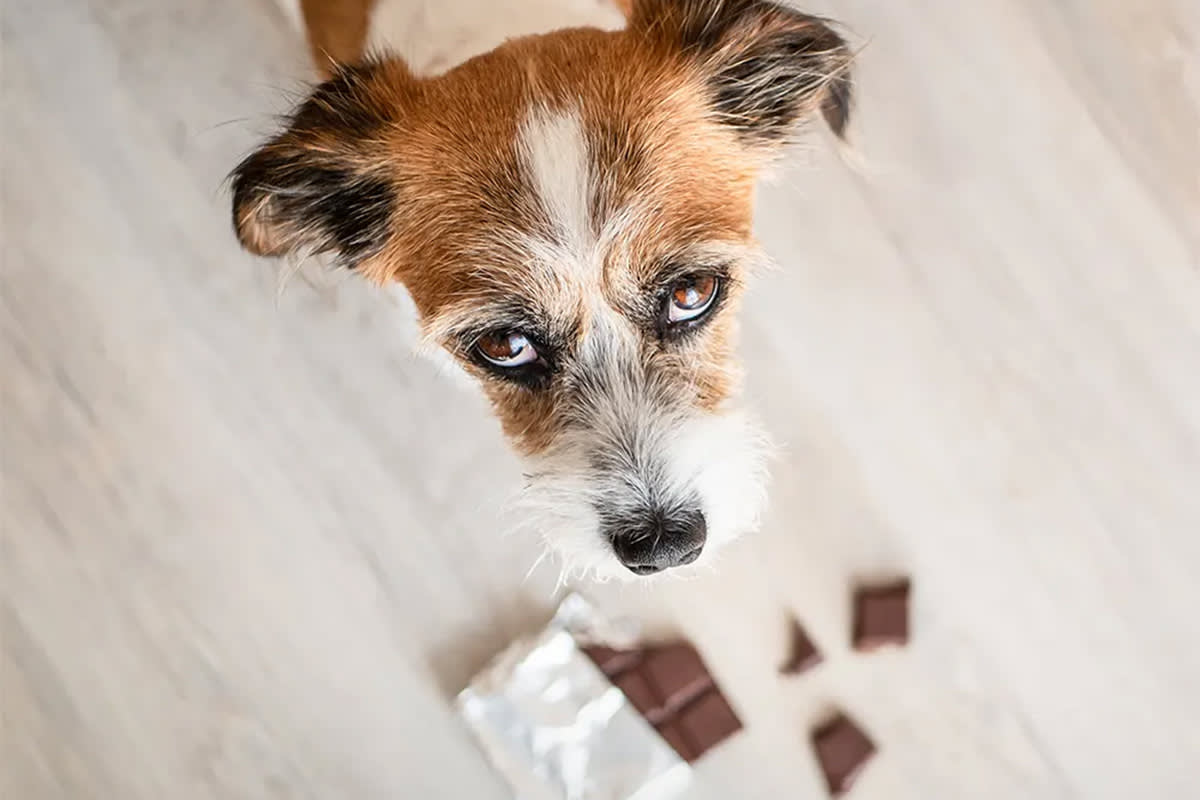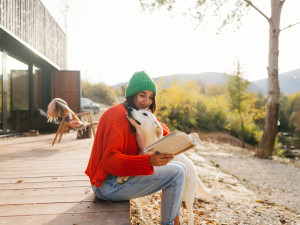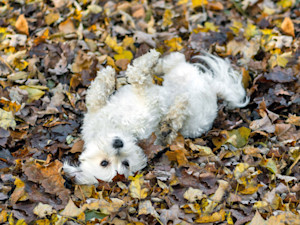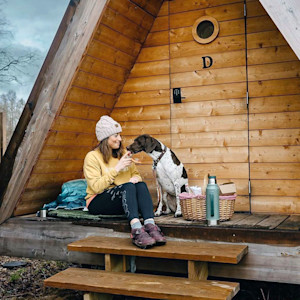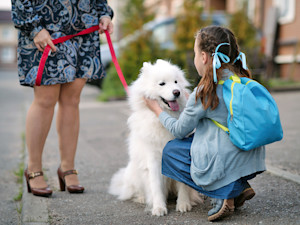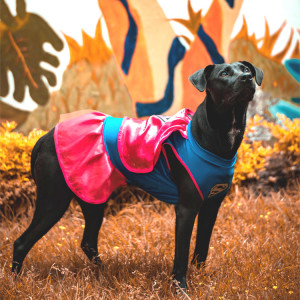10 Things Dogs Actually Hate About Fall
Not everyone loves chunky knits and pumpkin spice lattes.
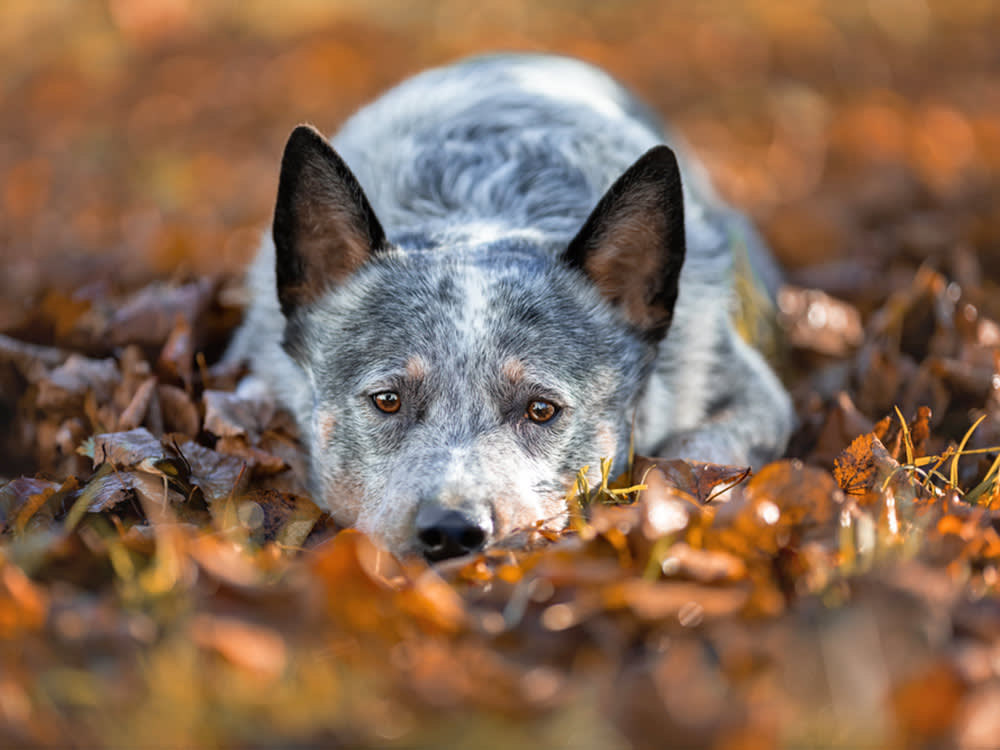
Share Article
In the human world, fall is a whole personality. If it’s your favorite season, you splurge on pumpkin spice lattes, you love your worn-in brown boots, you are an excellent bridesmaid, you are an even better road tripper, you adore a good hike and a good book, and you’re a little bit basic — but couldn’t care less.
In the canine world, though, things are a little different; it’s unlikely that your dog is as thrilled for the return of sweater layering, vibrant leaves, and crisp winds as you are.
“Most dogs do not hate fall itself,” says Dr. Eliza O'Callaghanopens in new tab, a veterinarian at Small Door Veterinaryopens in new tab in New York City. “They dislike the surprises that come with it.”
Because we can’t ask our pups directly, we asked five veterinarians: What do our dogs hate about fall?
How much do you spend on your pet per year?

Allergies
It’s not just people who hate allergies — your dog hates them, too. “Autumn is peak allergy time, with pollen in the air from ragweed, dust from fallen leaves, and mold,” says Dr. Aimee Warner, the resident veterinarian at Waggelopens in new tab.
Taking care of your pup’s symptoms — such as itchy skin and runny eyes — is a must in the fall when there are new mold spores and other antigens as the weather changes, says Dr. Murdoch. He recommends wiping paws and bellies after walks to lessen your dog’s symptoms.
You can also look into vet-approved shampoosopens in new tab and chat with your vet about antihistamines, he notes.
Cooler, damp weather
For most of us, it’s a thrill to drag our heaviest cardigans back out of the closet. But dogs don’t relish that damp chill in the same way, and it can even lead to joint stiffness for some of them.
“Chilly, damp weather makes arthritis flare in dogs, just like it does in us,” Dr. Matthew Murdoch, a veterinarian and the founder of Ferndale Kennelsopens in new tab, says.
Stress on the joints may also mean our dogs are slower to rise from a seated position and less eager to climb stairs. “Older dogs and large breeds with osteoarthritis often limp more once mornings turn chilly and sidewalks stay damp,” Dr. O’Callaghan says. “Wet leaves are slick, which means more slips and micro-strains.”
You can help your dog out with five or so minutes of easy leash walking before any kind of more active play, Dr. O’Callaghan says. Lean or senior dogs will benefit from a good jacket, and she also advises keeping their nails short for better traction, a low-impact exercise routine, and yoga mats or area rugs to avoid slipping at home.
Back to school
When school’s out, the house is buzzing: Maybe you and the kids have extra time to take your pup on hikes, or maybe you and your partner took your dog on a trip to the beach. From your dog’s perspective, it might have seemed like there were extra games of fetch, unlimited sun, and barbecues galore. What a dream!
“The magic of summer is hard to replicate,” admits Dr. Andrew Findlaytoropens in new tab, a veterinarian and editorial advisory board member at dvm360. “The weather is warm, the days are long, and activities plentiful. Hiking, trips to the beach or lake — the possibilities are endless as long as family is around. Then suddenly, it all stops.”
Dr. Findlaytor even sees an increase in separation anxiety each year when autumn begins.
“For families with kids, t his is especially hard on dogs, who are used to having a fairly constant companion around,” he says. He recommends spending “some extra TLC when getting home the first few weeks after [going] back to school” so that you can reassure your pup that while your schedule has changed, your love for them hasn’t.
Piles of leaves
That big bunch of leaves probably looked perfectly inviting — until your dog jumped into it.
“I’ve seen plenty of dogs who absolutely hate them,” says Dr. Helle Brandrup, a veterinarian at Neurogan Petsopens in new tab. “In fact, for some dogs, just the crackling noise of leaves underfoot is enough to send them scampering.”
Dr. Brandrup says it could be the smell, dampness, or even an odd critter hiding inside. But are the piles actually dangerous?
“Damp leaves can hide mold, bacteria, and parasites, and physically speaking, sharp sticks can be wedged in there, too,” she says. “Some critters like mice, squirrels, or even porcupines in some areas can find it a temporary home.” Even though your dog will probably be fine, she recommends steering clear — or at least keeping an eye on what your pup’s getting into.
Leaf blowers
File this one under “Noise Complaints.” Leaf blowers are a trigger that might “spike startle and reactivity in previously neutral dogs,” Dr. O’Callaghan says.
Like anything unexpected, your dog might prefer to avoid them. Consider that many dogs are frightened by vacuums, and leaf blowers are just as loud.
Shorter days
This one hits us all. Shorter days means less sunlight, and that’s tough on people and pups. It is kind of depressing when you leave the office at 5 p.m. only to realize it’s been dark for an hour already. Seasonal depressionopens in new tab is common in humans during these times, and as it turns out, our dogs can experience it, too.
“As the length of daylight grows shorter, some dogs may not do well with the reduction in sunlight and may undergo a change in their behavior or mood,” Dr. Warner says. “Some dogs develop a form known as seasonal affective disorder, much like in people, and become more sluggish or depressed.”
She recommends scheduling lots of walks when there’s plenty of daylight and giving pups extra mental stimulation, such as puzzle toys, to keep their brains buzzing.
Daylight saving time
Speaking of shorter days, humans aren’t the only ones who hate daylight saving timeopens in new tab. TikTok is full of pets wondering why their dinner is lateopens in new tab, not understanding that there is just an archaic rule about time that makes things very difficult for everyone.
“It makes sense from a dog's perspective,” Dr. Findlaytor says. “Over the past six months, the family has developed a routine. We wake up, feed the dog, take the kids to school, and off to work we go. All of a sudden, that whole schedule is changed over the course of a night.”
If your dog is particularly food-motivated, that might “turn their entire world upside down,” Dr. Findlaytor says. “And it doesn’t just stop at food. For families who have a routine after work of going for a walk or playing outside, it's now suddenly too dark by the time everyone gets home. Our dogs can’t explain the how or why, but their days are now shorter, meaning less time for fun.”
That might mean hiring a daytime dog walker or bringing them with you to work if you’re allowed; it’s a great excuse to do so.
Costumes
Oh, the humiliation. The Halloween festivities tend to run all October long these days, but does your dog really need to participate? And you’re going to dress them like a Labubu? Before your dog loses all respect for you, consider this: Is the costume really comfortable, or would your dog rather... not wear one?
“It’s necessary for dog parents to make sure Halloween remains fun and safe for their dogs by not pushing them into a costume if they are not at ease,” Dr. Warner says.
Dr. Brandrup adds that the type of costume also matters.
“I always advise owners to only attach any costume or accessories to the dog’s existing harness, since that is secured around non-vulnerable areas,” she says. “Stay away from the neck area for obvious reasons. The groin, eyes, and ears are also no-go zones, as anything pressing there will cause discomfort.” She advises avoiding costumes with tassels or loose parts, too.
Halloween night
Oh, my God; how dare you: You not only put your dog in a weird costume, but now the doorbell is ringing… over and over… and there are random kids… and they’re screaming… for candy? Of course your dog hates you — um, we mean hates fall. But don’t worry, it’s only temporary.
Dr. O’Callaghan describes Halloween as a “sensory storm” for our pups.
“Strangers at the door, doorbells all evening, masks, capes, and noisy decorations can push even stable dogs over threshold,” she says.
It’s all a lot of action for one night, so Dr. O’Callaghan suggests a quiet “safe room” with a white-noise machine. Close the curtains and give your pup a long-lasting lick mat or stuffed Kong, with plenty of exercise earlier in the day to wear them out.
Temptation
Not to sound all biblical or anything, but for dogs, temptation is everywhere this season: mostly in the form of Halloween candy and Thanksgiving dinner. While these two holidays are one-day-only affairs, let’s just admit that the candy is there for weeks, and the turkey leftovers are also everlasting.
“The biggest thing I think dogs hate about fall is that it is the season of temptation,” Dr. Findlaytor says. “There are so many delicious things for dogs to eat, and almost none of it agrees with their tummies.”
When working emergency vet shifts, he regularly gets pups who have misjudged how their bodies would react to candy: Chocolate, for example, is toxic to dogs, and many Halloween candies — especially hard or sugar-free ones— contain xylitol, which can be fatal in canines.
Thanksgiving is tough, too.
“Holiday baking and gatherings add grapes, raisins, onions, fatty trimmings, alcohol, and skewers,” Dr. O’Callaghan notes — all dangerous things for your pup.
While it can be tempting to make your dog a human plate, vets suggest resisting. “What starts off as a kind gesture often ends with a dog sick to their stomach,” Dr. Findlaytor says. But at the end of the day, can you really blame your dog for trying to take a slice of the pie (literally)? Not really, he adds.
“To our dogs’ eyes, this is a once-a-year bounty, just waiting for a brave dog to step up and save the family from overeating,” he says. So, instead of scolding them, give them a little feast of their own, even if it’s just some pumpkin puree from the pet store to mix in with their regular food.
So, once you’re finished with your (ahem, fifth) pumpkin spice latte, put it down and come up with a plan. Buy your pup their own special treats, get them a comfortable and safe Halloween costume, call the vet if you see signs of allergies, and take them on plenty of light-filled walks.
“With a little planning, most of those stressors are fixable, and fall can be a great season for comfortable walks, calmer skin, and confident dogs,” Dr. O’Callaghan says.
And if they’re still grumpy, give them some gentle pets and whisper in their ear: Only six more months ’til spring.

Marti Trgovich
Marti Trgovich is a writer specializing in pets and wildlife. She has written about animals for National Geographic, The Washington Post, Newsweek, and other publications, and she spent nearly a decade as an editor at The Dodo. Her favorite animals are guinea pigs, sheep, and small, saucy senior dogs.
Related articles
![a woman in a red sweater and green hat hugs a dog outside while reading a book]()
18 Best Travel Destinations to Crunch Leaves With Your Dog This Fall
Gorgeous spots across the US that’ll inspire you and your bestie to get your autumn on.
![Dog rolling around in leaves outside.]()
The Hidden Dangers of Letting Your Dog Play in Fall Leaves
Not to be a total killjoy, but you should be aware of the risks.
![Woman with her dog at an Eastwind Hotel.]()
10 Best Dog-Friendly Hotels in the U.S. For Cozy Fall Getaways
Frolic in the leaves with your pup at these gorgeous spots.
![Little schoolgirl happy to see her dog before or after school.]()
School’s Back in Session—How to Deal if Your Dog Gets Overwhelmed by the Chaos
Noisy school buses and crowds of roving children can be scary for some pups.
![black dog wearing a supergirl costume]()
Do Dogs Like Halloween Costumes? How to Dress Them Up So They Don’t Hate It
Even though they probably will.
